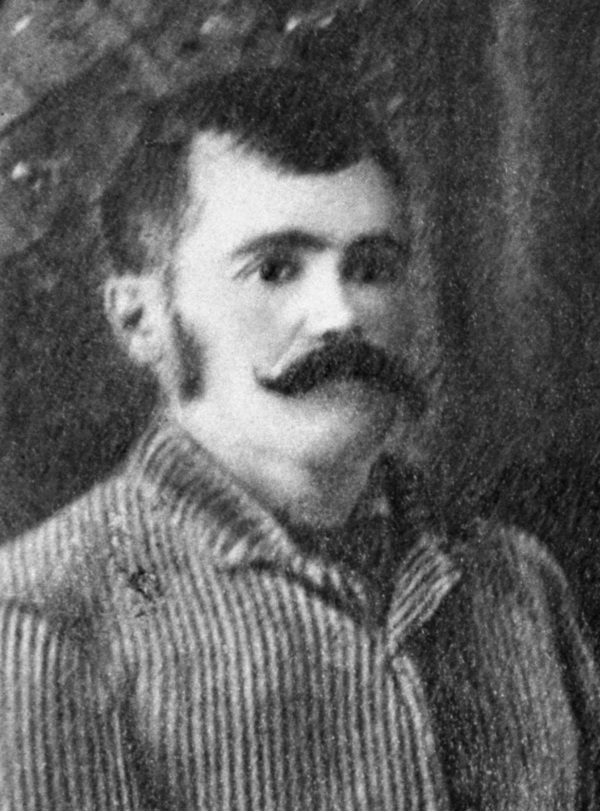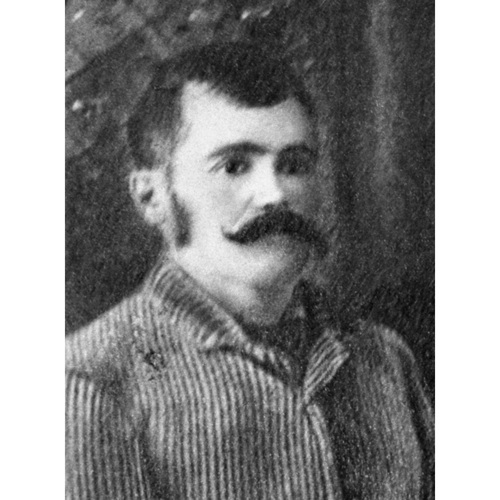
Source: Link
HOGG, SIMON JACKSON, miller, lumber merchant, and municipal politician; b. in 1845 in Halton County, Canada West, to a farming family of Scottish extraction; d. 6 Dec. 1887 in Calgary (Alta).
Simon Jackson Hogg apprenticed early in his life as a miller in the village of Nottawa, near Collingwood (Ont.). Following the completion of his training, he worked for a while in a flour-mill in Creemore, and then became part owner of a mill in New Lowell. A hard-working and shrewd manager, he did well in the flour-milling business. During the 1870s, however, he had the misfortune of losing his substantial savings in wheat speculation. Closing his business at New Lowell, he moved to Mansfield, where he undertook to manage a flour-mill for D’Alton McCarthy*.
In 1881 Hogg decided to seek his fortune in the Canadian west. Leaving his wife and children in Ontario, he went to Manitoba, settling first in Minnedosa and then in Brandon. By the spring of 1883 he was in Medicine Hat (Alta), operating a lumber yard in partnership with J. A. Deacon. Later that year the partners moved their business to Calgary, arriving just before the Canadian Pacific Railway. Hogg and Deacon, now operating as S. J. Hogg and Company, were immediately caught up in the building boom in the frontier town. With a large stock of goods they helped meet the ever-rising demand for lumber and building supplies. In addition, Hogg and his partner sold wagons, ploughs, rakes, mowers, binders, and binding twine to the settlers who were taking up land in the Calgary district. The growing volume of trade, coupled with the inflated prices for lumber and farm implements, made their operation highly profitable. Once again Hogg was beginning to feel economically secure. Accordingly he had a modest but comfortable frame dwelling house built for $1,500 and in the late fall of 1885 his family came from Ontario to join him.
From the outset, Hogg had played a leading role in the development of the western community. One month after the incorporation of Calgary as a town in November 1884, he was elected to the first town council, topping the polls with 183 votes. Although he did not serve a full one-year term, he was an active and influential councillor. Along with Mayor George Murdoch and Joseph Henry Millward, Hogg became a member of the important standing committee on by-laws, and thus helped to shape the structure of Calgary’s government. As a member of this committee Hogg kept in mind the needs of the townspeople, but also his own. For example, although he was concerned about providing adequate fire protection for the town, which in the mid 1880s consisted mainly of wooden structures, he persuaded the council to modify a proposed fire by-law so that he would not have the expense of buying additional land to ensure that his lumber yard was a safe distance from the nearest downtown buildings.
In 1886 and 1887 Hogg was the chairman of the Calgary Public School Board which had been established in March 1885. An effective administrator, he won the confidence of his fellow trustees and the ratepayers, and on 25 Nov. 1887, less than two weeks before his death at age 42, he was named chairman of the board for another year.
Hogg died as a result of an attack of pleurisy, leaving his wife and seven children. According to an obituary, he “was a man of the kindliest disposition,” and “his sound judgment and high intelligence made his presence felt in whatever company he found himself.” During his illness Hogg had put his business affairs in order. He left a fairly sizeable estate which included his life insurance policies valued at $10,500.
Calgary Board of Education Arch., Calgary Public School Board, Minute book, 1885–92: 18–57. Glenbow-Alberta Institute, City of Calgary papers, Minutes, 1884–85: item 5, p.103. Calgary, Alberta, Canada: her industries and resources, comp. and ed. [T. S.] Burns and [G. B.] Elliott (Calgary, 1885; repr. 1974), 12, 19, 48. Calgary Herald, 1883–87. Calgary Tribune, 1885–87. Illustrated atlas of the county of Simcoe (Toronto, 1881; repr. Port Elgin, Ont., 1970), 50. Illustrated historical atlas of the county of Halton, Ont., comp. J. H. Pope (Toronto, 1877; repr. Port Elgin, 1971), 71. M. L. Foran, “The Calgary town council, 1884–1895: a study of local government in a frontier environment”
Cite This Article
Henry C. Klassen, “HOGG, SIMON JACKSON,” in Dictionary of Canadian Biography, vol. 11, University of Toronto/Université Laval, 2003–, accessed December 29, 2025, https://www.biographi.ca/en/bio/hogg_simon_jackson_11E.html.
The citation above shows the format for footnotes and endnotes according to the Chicago manual of style (16th edition). Information to be used in other citation formats:
| Permalink: | https://www.biographi.ca/en/bio/hogg_simon_jackson_11E.html |
| Author of Article: | Henry C. Klassen |
| Title of Article: | HOGG, SIMON JACKSON |
| Publication Name: | Dictionary of Canadian Biography, vol. 11 |
| Publisher: | University of Toronto/Université Laval |
| Year of publication: | 1982 |
| Year of revision: | 1982 |
| Access Date: | December 29, 2025 |



